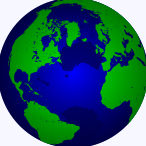Now that questions about implementation of the Affordable Care Act shift from “how many people have enrolled” to “will patient outcomes be improved,” healthcare innovators similarly would be wise to turn to finding ways to help shape, define and encourage the right outcomes.

Now that questions about implementation of the Affordable Care Act shift from “how many people have enrolled” to “will patient outcomes be improved,” healthcare innovators similarly would be wise to turn to finding ways to help shape, define and encourage the right outcomes.

Recently, the U.S. Department of Health and Human Services (DHHS) issued a draft set of recommendations for setting up a healthcare IT structure that helps ensure the physical safety of the patient (as well as his or her information), while preventing medical errors, reducing unnecessary tests, increasing patient engagement, and quickly identifying and responding to public health threats and emergencies.
We’ve closely studied the relationship patient engagement has with nearly all the other concepts mentioned by the U.S. DHHS. In past posts, we’ve discussed three particularly important issues that medical innovators would be well-served to adopt into their ideas and projects:
Trials that center on the patient—The traditional clinical trial model with masses of volunteers is showing cracks, because of more challenging recruitment and more complex regulatory and liability issues. But recently I wrote that the Internet, greater consumer power and a trajectory towards tailored, “precision” medicine could provide an answer: more personalized, patient-centered clinical trials. These trials also can change how medical research is conducted. Read how here.
Arming patients with data—Last year, the Center for Medicare and Medicaid Services released data on in-patient hospital costs across the country to provide consumers/patients with cost comparison information. While most popular media focused on the dramatic price discrepancies exposed by the release, my colleague Caroline Popper noted that the release also shows how information can drive behavior/decision making and that access to cost information, in particular, can harness the power of the medical consumer to drive costs down.
Satisfaction and medical outcomes; versus or in synch—What’s more important, keeping patients happy or keeping them well? Both, my colleague Stephanie Kreml wrote in a blog for InformationWeek. Practitioners have generally focused more on outcomes and quality of care, such as the rates of post-procedure complications, readmissions, and morbidity and mortality. But now patients also must be satisfied with their care. Ways that help them become more empowered over their care can help boost satisfaction, for patients and physicians. Read how here.
(patient engagement / shutterstock)







